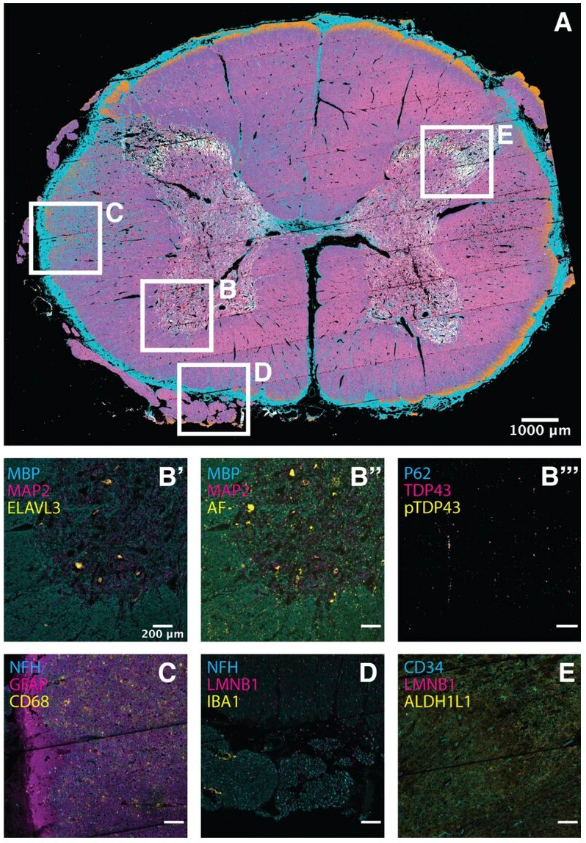Six antibodies from Atlas Antibodies used in multiplexing
Article: "An open source toolkit for repurposing Illumina sequencing systems as versatile fluidics and imaging platforms"

The image shows high-plex 4i tissue profiling from postmortem ALS patient spinal cords on fresh frozen tissue sections
"An open source toolkit for repurposing Illumina sequencing systems as versatile fluidics and imaging platforms".
Fluorescence microscopy is a crucial method in the life sciences. It requires automated execution to generate robust and reproducible data.
Accessibility to software, hardware, and protocol open platforms is therefore necessary to facilitate analysis and programmable applications without specialized engineering or software development expertise.
This paper describes an easy-to-use Python toolkit to control individual HiSeq2500 components through customized recipes for various applications requiring robust automation.
The automated 4i protocol generates repeatable protein expression maps and enables biologically relevant measurements of cell type composition and protein localization across conditions.
Six antibodies from Atlas Antibodies were used in multiplexing on mouse and postmortem ALS human spinal cord tissue sections:
Anti-MBP monoclonal (AMAb91062)
Anti-LMNB1 monoclonal (AMAb91251)
Anti-TMEM119 monoclonal (AMAb91528)
Anti-AQP4 polyclonal (HPA014784)
Anti-ALDH1L1 polyclonal (HPA050139)
Anti-ELAVL2 polyclonal (HPA063001)
